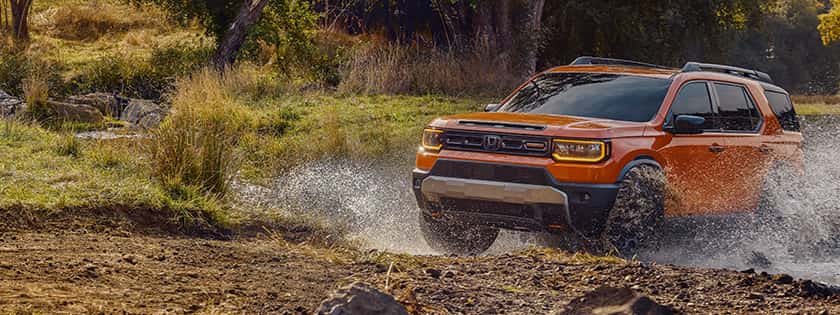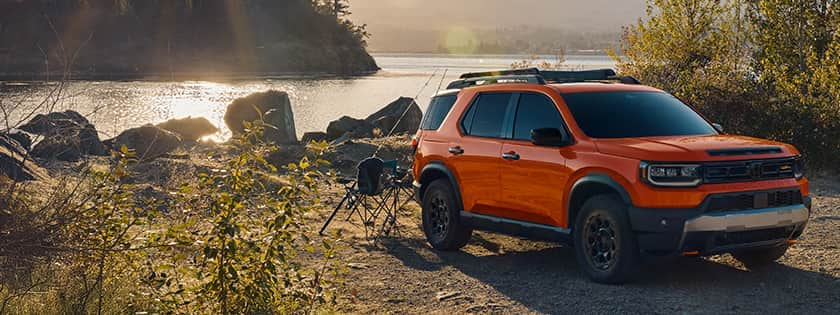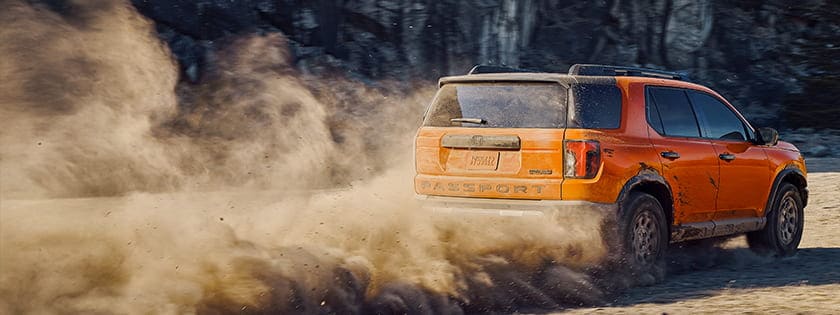A new crash test is shaking up the world of car safety after some premium vehicles with otherwise excellent reputations for crash safety performed poorly in the new evaluation.
New Crash Test Shakes Up Car Safety Ratings
More To Think About When You're Shopping for Safety
The Insurance Institute for Highway Safety (IIHS) has developed the "small overlap frontal crash test" to replicate what happens when a vehicle strikes a tree, light pole or other vehicle with its front corner.
The institute is encouraging car buyers to use these test results along with its well-established Top Safety Picks. The National Highway Traffic Safety Administration (NHTSA), which administers the federal government's five-star safety rating system, does not include this test as part of its New Car Assessment Program. In fact, the IIHS says this test is not conducted anywhere else in the U.S. or Europe outside of the proving grounds of some carmakers.
See Edmunds pricing data
Has Your Car's Value Changed?
Used car values are constantly changing. Edmunds lets you track your vehicle's value over time so you can decide when to sell or trade in.

IIHS issued the first crash test report about these small overlap frontal crash tests on August 14, rating 11 midsize luxury or near-luxury vehicles. IIHS gave "Good" overall ratings to only two cars — the Acura TL and Volvo S60. Other sedans, including cars from BMW, Lexus and Mercedes, got ratings of "Marginal" or "Poor."
The IIHS plan is to expand the new crash test to other vehicles soon. First will be more moderately priced family cars and then small sport-utility vehicles, says IIHS president Adrian Lund.
The goal is to further reduce the death toll from this particular kind of frontal crash, which involves only a car's front corners. According to the IIHS, this part of a vehicle is typically not well protected by existing crush-zone structures, which are meant to absorb the energy from such impacts.
Reaction to the New Overlap Impact Test
So far, there's been a positive response to the IIHS test from safety experts and carmakers, even from those whose vehicles rated poorly on the first testing.
The Audi A4 got an overall poor rating, but "Audi commends the Insurance Institute for Highway Safety's [IIHS] efforts to improve the safety of all vehicles on the roads of America," says company spokesman Joe Jacuzzi.
He says the company has already begun to incorporate the latest knowledge about safeguards in small overlap frontal crashes into its vehicle designs.
Allison Takahashi, a spokesperson for Toyota and Lexus, says: "With this new test, the institute has raised the bar again and we will respond to this challenge as we design new vehicles."
Advocates for Highway and Auto Safety "support the development of a small overlap impact test," says Shaun Kildare, director of research for the organization, which is an alliance of consumer, health and safety groups and insurance companies and agents.
The test is "a good standard in terms of identifying weaknesses in an otherwise good system," Kildare says.
The new test also gets a thumbs-up from NHTSA. "The small overlap frontal crash test announced by the Insurance Institute for Highway Safety is the first test in the world to address the risk of severe offset crashes and the National Highway Traffic Safety Administration applauds IIHS for starting its new program," NHTSA Deputy Administrator Ron Medford says in a statement released by the agency.
According to Volvo's Adam Kopstein, manager of safety and compliance, the carmaker has been assessing crashes of this type for quite some time. The 1992 Volvo 850 was the first car designed with this crash in mind, he says. "Small overlap collisions at high speeds are often very severe."
Test Details
The small overlap frontal crash is so named because the vehicle runs into a rigid barrier at 40 mph with the crash forces isolated on the front corner on the driver side, which represents just 25 percent of the overall width of the vehicle's front end.
Existing tests, such as NHTSA's frontal test, look at the ability of vehicles to withstand a crash at 35 mph into a barrier covering the entire width of the vehicle. In another test, the moderate overlap frontal test, 40 percent of the total width of a vehicle slams into a barrier on the driver side. The IIHS test escalates the speed of the impact and significantly reduces the area of the vehicle that absorbs the blow, dramatically increasing the energy of the impact that the car and its safety systems must withstand.
In all, about 10,000 people a year die in frontal crashes of all types, Lund notes. "We were looking for why people were still being killed in this kind of crash," he says. These small frontal overlap crashes may make up nearly a quarter of the frontal crashes that result in serious or fatal injuries to drivers and front seat passengers, according to research by the IIHS.
For instance, a small overlap frontal crash in the real world might involve a single car running into a light post, Lund says. Or a driver on a two-lane road might stray over into the opposing lane, realize the mistake and in swerving back to his own lane, clip the oncoming vehicle, he adds.
In an accident that involves the front quarter of a vehicle, typical crash damage can involve:
- Intrusion into the footwell, with the wheel and left front tire forced rearward far enough to cause serious leg and foot injuries.
- Collapse of the A-pillar of the roof at the top corner of the windshield, which can lead to head injuries.
- Compromise of the passenger restraint system.
Small Overlap Frontal Crash Test: First Report Card
After administering its new test to some 11 vehicles — all 2012 models — the IIHS assessed each vehicle's performance in a number of different areas and then scored the results. It rated each vehicle according to structural integrity, performance of the passenger restraint system and passenger injuries as measured by crash dummies. It also gave each vehicle an overall score.
The Acura TL and Volvo S60 garnered "Good" overall scores. IIHS gave the Infiniti G an "Acceptable" overall score. "Marginal" overall scores went to the Acura TSX, BMW 3 Series, Lincoln MKZ and Volkswagen CC.
IIHS gave a "Poor" overall rating to the Audi A4, Mercedes C-Class, Lexus IS 250/350 and Lexus ES 350. IIHS singled out the Volkswagen CC for a dubious achievement, as it was the first car in an IIHS evaluation to ever lose a door in testing. The door sheared off its hinges during the test, downgrading the car to "Poor" in passenger restraint mechanics. Doors should stay closed in crashes to keep occupants from being ejected, IIHS says.
All 11 vehicles got "Good" ratings for the risk of head, neck and chest injuries as measured by crash test dummies, the IIHS found.
IIHS notes in its report, however, that many cases of serious upper body injuries occur in real-world crashes of this type. The differences between the real-world crashes and testing results might be due to the inherent limitations of using crash test dummies, IIHS researchers say.
Changes for a Good Grade
To get a good result on the new crash test, Lund says, carmakers need to strengthen the passenger compartment to forestall the intrusion of the front wheel in small overlap frontal crashes.
Carmakers also need to strengthen the structure in the outer edge of the vehicle to help the wheel absorb some of the crash energy, he adds.
According to the report, side airbags don't always deploy in these types of frontal crashes, leaving passengers more vulnerable to head injuries from contact with the window sill or the A-pillar. If the side bags did deploy in such impacts, they would eliminate what IIHS calls the airbag ''gray zone'' — a gap in the areas covered by front and side bags.
Shopping Considerations
For now, vehicles that earned good ratings in the small frontal overlap tests and also got the IIHS Top Safety Pick rating will probably be put in a category known as a "Top Safety Pick-Plus," or something similar, Lund says.
For the cars that didn't do so well on the new test but earned top marks in other crash tests, Lund notes, "We didn't want to take away their top safety pick designation, for now at least.''



